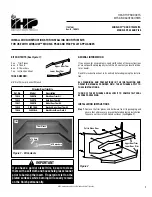
13
c) Connecting the LED Strips/LEDs
The light offers the possibility of directly soldering on up to eight LED strips with an operating
voltage of 12 V and a maximum power intake of 1 A/per strip.
Even if the MOSFET switching outputs (FDS6890A) can resist up to 7.5 A, it is recommended
not to load the separate outputs with more than 1 A due to the board layout and cooling.
If you want to solder in individual LEDs with a lower operational voltage of only 2 - 3 V,
a suitable dropping resistor (Rv) must be calculated. For calculation of the dropping resistor, you
should use an operational voltage of 12 V, since a freshly charged 3-cell LiPo battery may have
far more than 12 V instead of 11.1 V.
Example calculation:
Assuming that the light diode used has a supply voltage of 2.6 V and a power intake of 20 mA,
first the dropping resistor voltage must be calculated:
12 V – 2. 6 V = 9.4 V
If you want to switch two same diodes in sequence, 2 x 2.6 V = 5.2 V must be subtracted
from the operating voltage of 12 V.
For three same diodes, this is 3 x 2.6 V = 7.8 V to be subtracted from the operating
voltage of 12 V (12 V - 7.8 V = 4.2 V).
Now use Ohm’s law R = U : I to calculate the dropping resistance Rv:
Rv = 9.4 V: 0.02 A = 470 Ohm
Use the formula P = U x I to also calculate the output the dropping resistor must be able to
withstand:
9.4 V x 0.02 A = 0.188 W
A resistor with an output of ¼ W (0.25 W) would therefore be sufficient.
The respective upper connection contacts of the plugs X3 (L1 to L4) and X4 (L5 to L8) are
intended for the LEDs or LED strip connection. The lower connection contacts are connected to
the plus connection (+) of the drive battery (11.1 V of the LiPo battery).














































